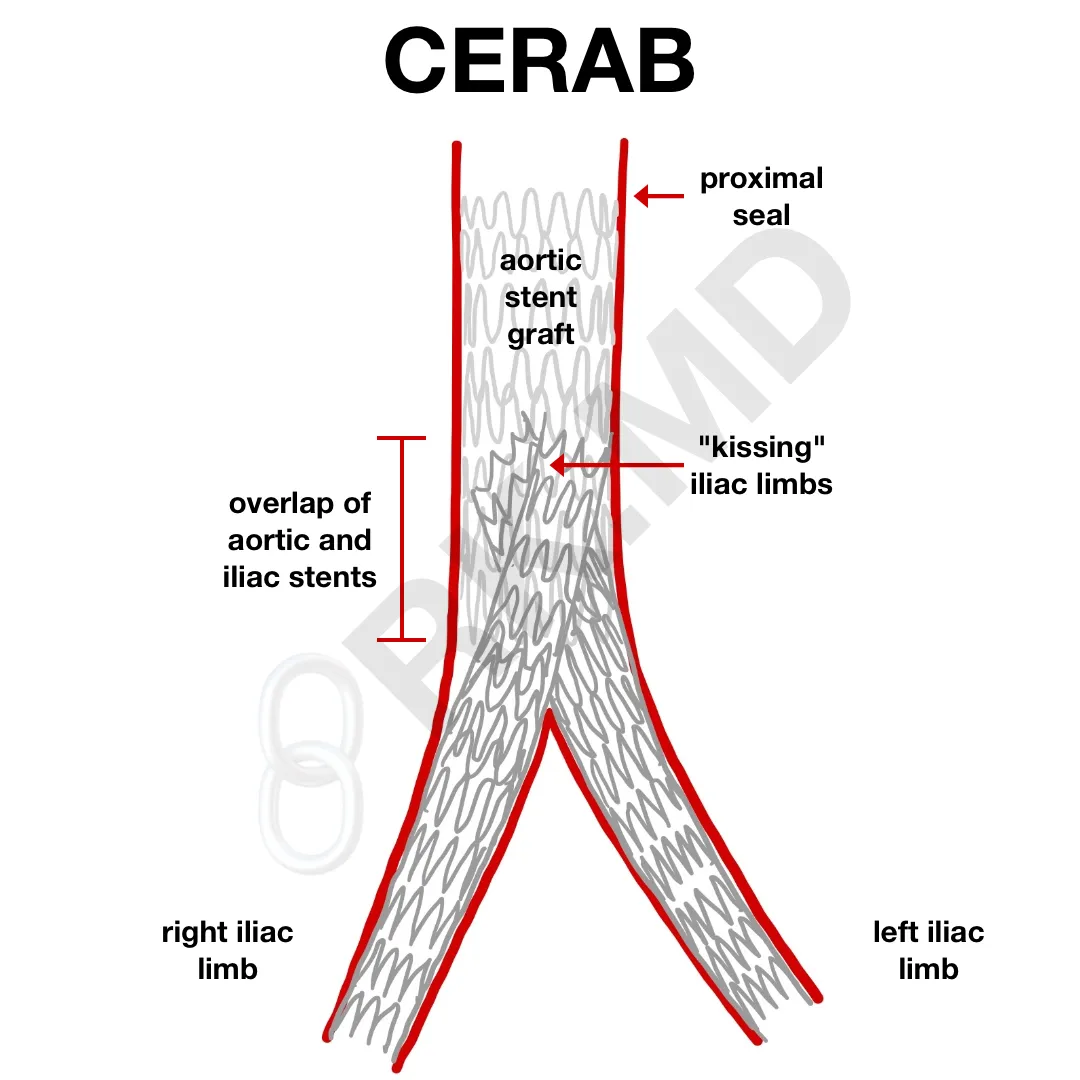Covered endovascular reconstruction of the aortic bifurcation (CERAB) is a minimally invasive technique used to address aortoiliac occlusive disease, aneurysms of the aortic bifurcation, or recurrent stenosis of prior aortoiliac interventions. CT angiography is performed to assess for calcifications and landing zones in the aorta and iliac arteries, location and disease in the visceral vessels, etc.
Typically, bilateral femoral artery sheaths are placed with wires advanced into the distal aorta. An aortic stent graft is advanced through one sheath and deployed proximal to the aortic bifurcation with subsequent balloon expansion to seal the proximal side of the stent against the aortic wall. A pigtail is advanced from the contralateral sheath into the aortic stent, ensuring it’s in the stent (and not between the native aortic wall and stent). Once this is confirmed, both sheaths are advanced into the aortic stent. The two iliac limb stent grafts are simultaneously inflated in a “kissing” technique, ensuring enough overlap with the aortic stent.
Completion angiography is performed assessing flow through the CERAB and endoleaks (especially types I and III). The access sites (either percutaneous or cutdown) are then closed.
Drop me a comment below with questions!






